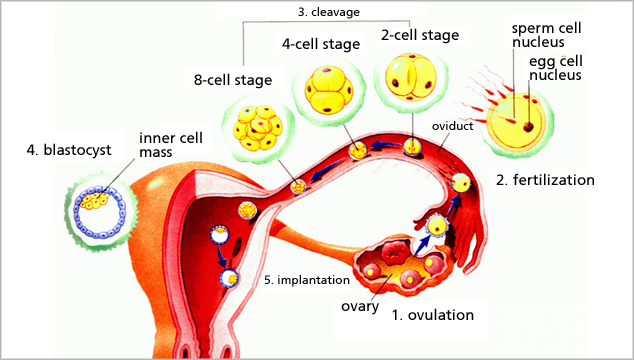One of the major causes of infertility is fallopian tube obstruction. The fallopian tubes are the uterine tubes where fertilization occurs. When they are blocked, the sperm and the egg cannot meet, thus, the egg cannot be fertilized. In fact, blocking the fallopian tubes is sometimes used as a contraceptive method. However, this is a permanent procedure and method of birth control, and is usually chosen by women who already have children. Claim Your 20 Free Pregnancy Tests – Click Here

Unfortunately, fallopian tube obstruction is the cause of infertility in 20% of the cases. Many times, women who want to become pregnant are unaware that they suffer from this health condition, because there are no obvious symptoms. This disorder has different causes, and treatments are available for most of them. The fastest solution remains in vitro fertilization. Because fertilization cannot occur normally, the egg is removed and fertilized outside the body, after which the embryo is placed in the uterus.

One of the most common causes of blocked fallopian tubes is an infection. Sometimes, the STD Chlamydia trachomatis can cause distal tube obstruction. Other possible causes are endometritis, appendicitis or peritonitis. Fallopian tube obstruction is also associated with HIV infection.

Women with infertility problems who have suffered from pelvic inflammatory disease could suspect fallopian tube obstruction. There are different tests they could have to diagnose a fallopian tube problem. Because Chlamydia is often the cause of blocked fallopian tubes, testing for this disease is one of the simplest and most affordable methods that could suggest tube obstruction. Sonography might also hint to a fallopian tube problem, and through surgery (laparoscopy), the obstruction of the tubes can be diagnosed. Another evaluative method is hysterosalpingogram.

When it comes to treating blocked fallopian tubes, the traditional solution is tubal surgery. However, surgery is invasive and has several possible side-effects, one of the most common one being the risk of developing ectopic pregnancies. A less invasive and more affordable solution in cases of fallopian tube obstruction is in vitro fertilization, or IVF.
Nowadays, most women who suffer from blocked fallopian tubes choose IVF instead of surgery. IVF is safe and effective, and offers women with infertility problems a very easy solution to conceive. However, in case the obstruction of the fallopian tubes is associated with hydrosalpinx formation (fluid filling a blocked fallopian tube), the success rate of IVF is smaller, so doctors recommend treating hydrosalpinx before having IVF.

A good method of prevention is protection against sexually transmitted diseases. Also, immediate treatment of a pelvic inflammatory disease could prevent blocked fallopian tubes. Women who want to have a baby should watch out for the signs that indicate a fallopian tube obstruction and start getting treated as soon as the problem is diagnosed.










Comments